
 |
|



|
|||
|
Stage equipment
|
Elevators
|
Compressed gases
|
Press
|
|
|
|||
| -- Go to older news -- | |||
These days Tomelloso hosts an escape room "El Tesoro de Don Quijote"Friday, April 1, 2022 An 'escape room' to rediscover the region's treasures 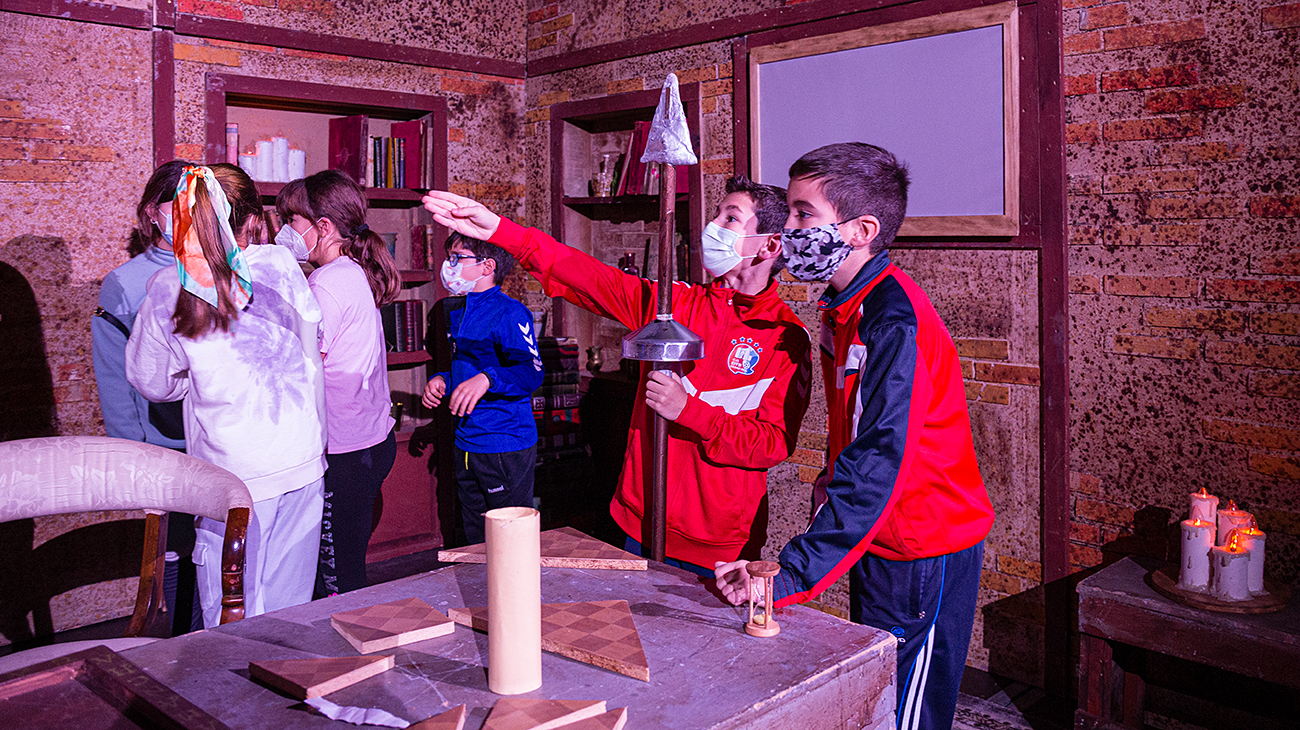
Ciudad Real hosts the first of the activities commemorating the 40th anniversary of the Statute of Autonomy of Castilla-La Mancha The commemorative activities of the 40th anniversary of the Statute of Autonomy of Castilla-La Mancha have started this morning in Ciudad Real with the 'escape room' El Tesoro del Quijote, installed in the Plaza de la Constitución that invites you to rediscover the treasures of Castilla-La Stain. Developed by the Narea theater company, one of its founders, Javier Moncada, has highlighted that "it is the greatest thing we have done" and thanked the Community Board and the Provincial Council for their trust in being able to execute this project that has been developed entirely by artists from Castilla-La Mancha, mostly from Ciudad Real. Moncada stated that in the more than three decades of existence of the Narea company they have seen the parallel evolution of Castilla-La Mancha as an autonomous community and highlighted the pride for their land, well known outside its borders for Don Quixote. "For this reason, when we considered what to do and the 'escape room' was in fashion, we saw that the definition of 'escape room' takes us back to Don Quixote, which is an adventure." 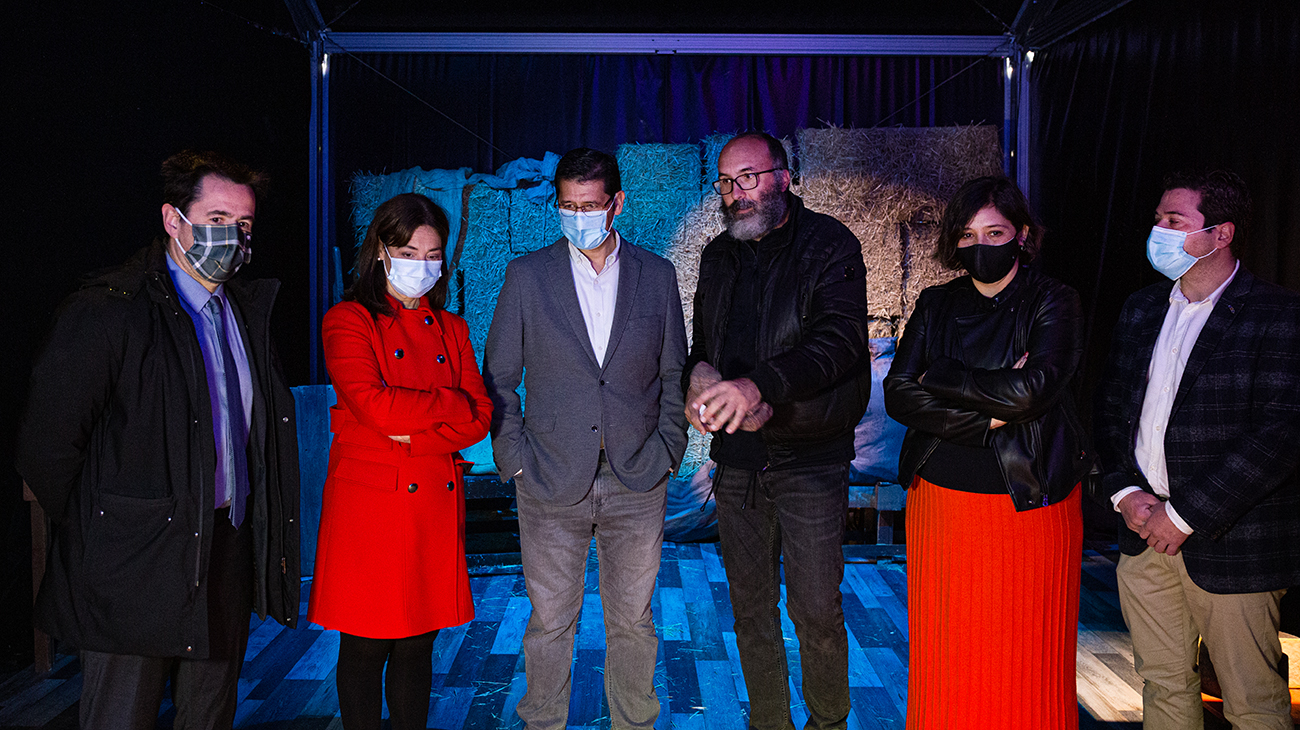
For two and a half years Narea has worked on the development of this project. "During the worst times, with a crisis, with difficulty finding materials and more expensive ones, but as they say in the profession, the more production difficulties, the sure success", Moncada wished, who especially praised a fantastic artistic team that very illusion has left life in this project. Moncada explained how the 'escape room' works. It has four rooms in which players have to achieve their goal in less than ten minutes to get a key. The first room is a cave, the second a library in which the region's heritage is shown, in the third there is a 'videomapping' on the evolution of Castilla-La Mancha and in the fourth room there is talk about wine, cheese and denominations originally. All the rooms are enlivened by actors who represent characters from Don Quixote. With the keys, players can open the treasure chest, which hides inside... Commemorative activities 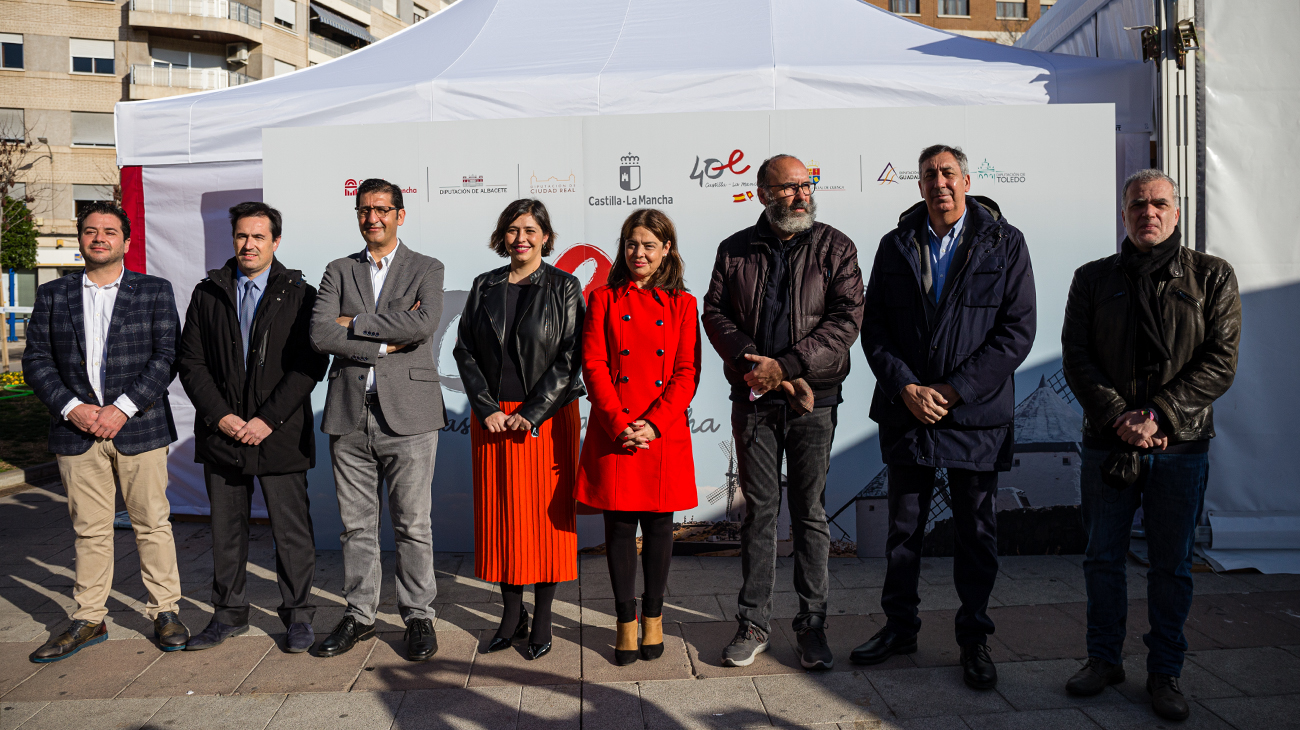
The Deputy Minister of Culture and Sports, Ana Muñoz, highlighted that this 'escape room' is the first of the activities to be held in Ciudad Real on the occasion of the 40th anniversary of the Statute of Autonomy. An activity that will allow visitors to tour its natural, historical and cultural heritage and "will rediscover how wonderful our region is". Muñoz explained that the objective of this commemoration "is to fill the streets and squares of the municipalities of our region with culture and to do so, in addition, with activities carried out by people and companies from Castilla-La Mancha." In addition to wanting to thank all the provincial councils and the regional courts for their involvement in the celebration of these 40 years, he pointed out that the escape room 'El Tesoro de Don Quixote', which was inaugurated today, is one of the numerous activities that have been designed so that they can be enjoyed by people of all ages. 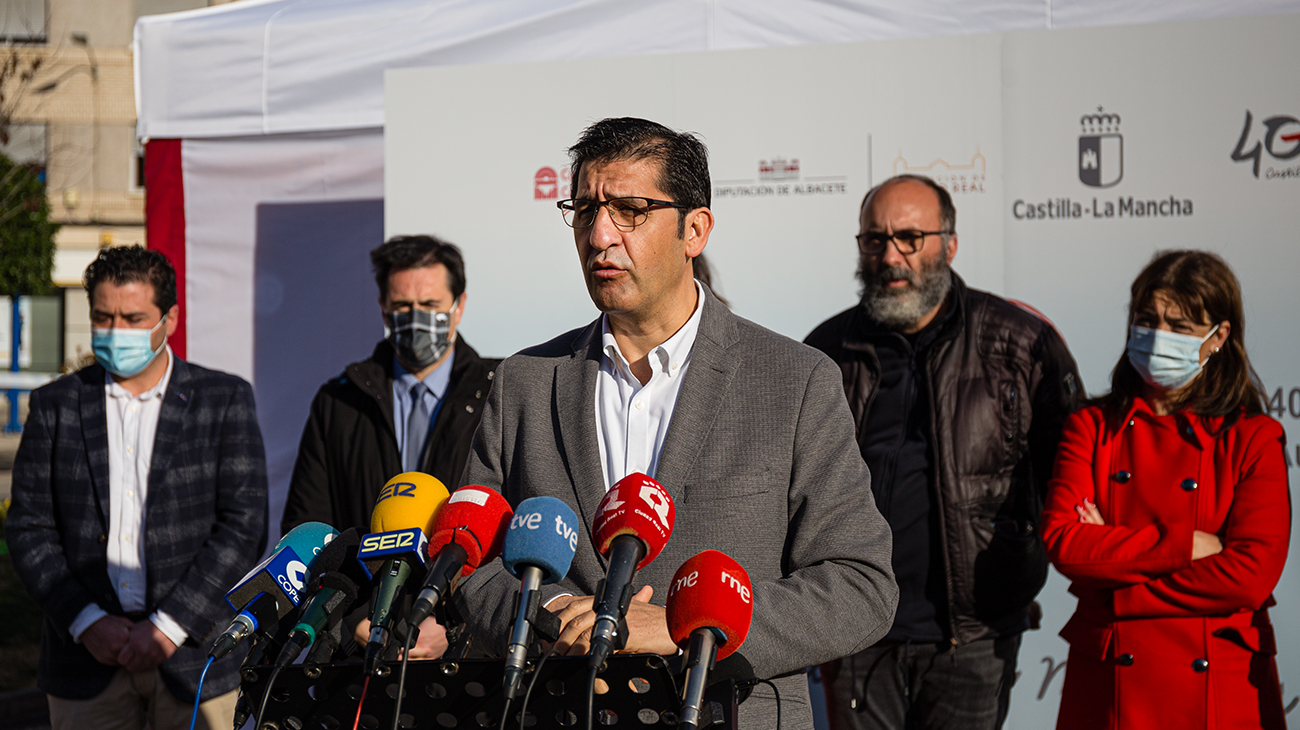
For his part, the president of the Provincial Council, José Manuel Caballero, stressed the importance of the Statute of Autonomy for the evolution and development of Castilla-La Mancha as an autonomous community. The provincial institution will collaborate financially in the commemoration with 200,000 euros for the development of activities in all corners of the province. "It is about generating a feeling of pride and belonging to our autonomous community, of being proud of being Castilian-La Mancha", said Caballero. For Caballero, "today the men and women of this land, with their effort and daily work and thanks to autonomy, have achieved better education and health, more well-being, as well as infrastructures that have modernized the territory from what was originally five provinces and today it is a regional reality”. And all this "from our commitment to make a stronger Spain and where we can all live together in peace and freedom". For her part, the first mayor of the City Council, Pilar Zamora, thanked Ciudad Real for receiving these commemorative events and that it will host the great festival for the Statute of Autonomy, whose origin was a turning point for Castilla-La Mancha because it endowed it with more powers and facilitated its progress. ‘Escape room’ 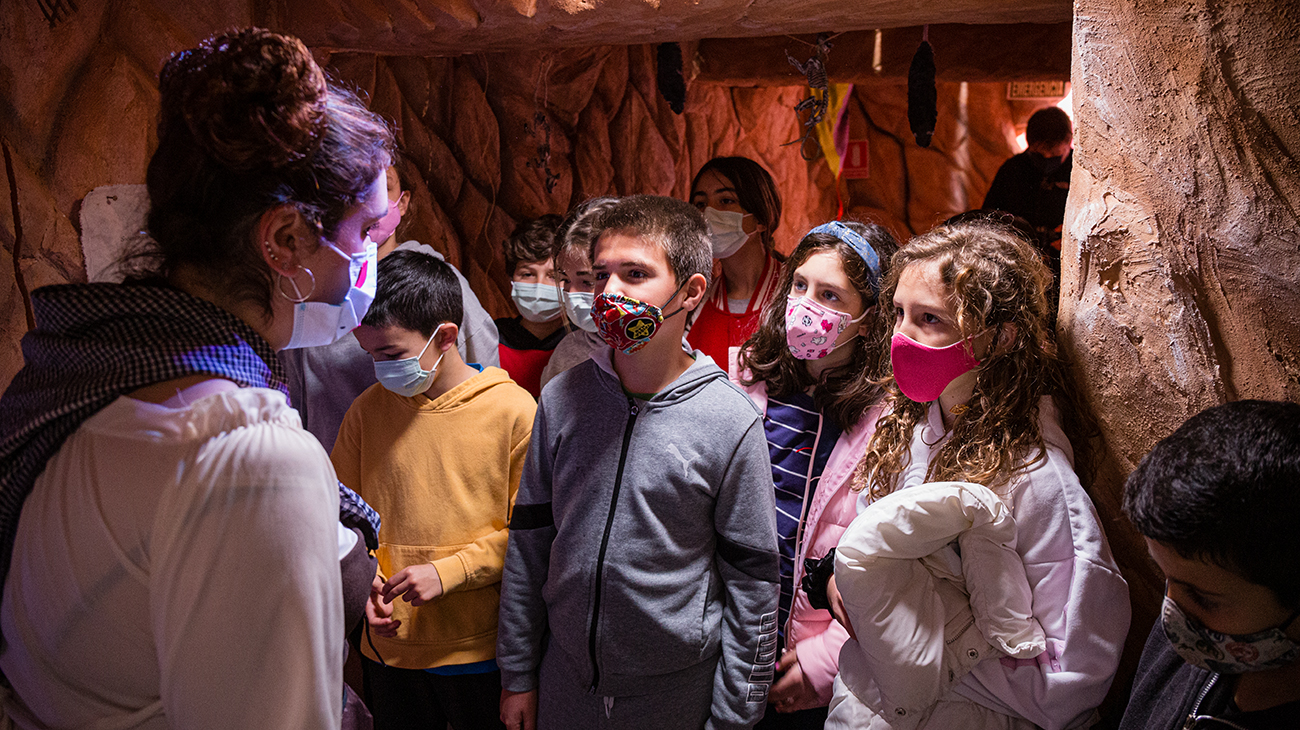
Schoolchildren, students and associations from the province of Ciudad Real will have the opportunity to participate in the 'escape room' until next Saturday morning, when the activity will be opened to the whole of society with the aim of giving the event a greater dimension informative. More than 40 professionals have participated in the development of this project and eight people have participated in its staging. The facilities to develop it have been built expressly, with a structure of more than 35 meters long by 20 wide, in addition to the use of two 12-meter-long trucks. Source: lanzadigital.com |
|||
26 Jerez Festival 2022Wednesday, February 2, 2022 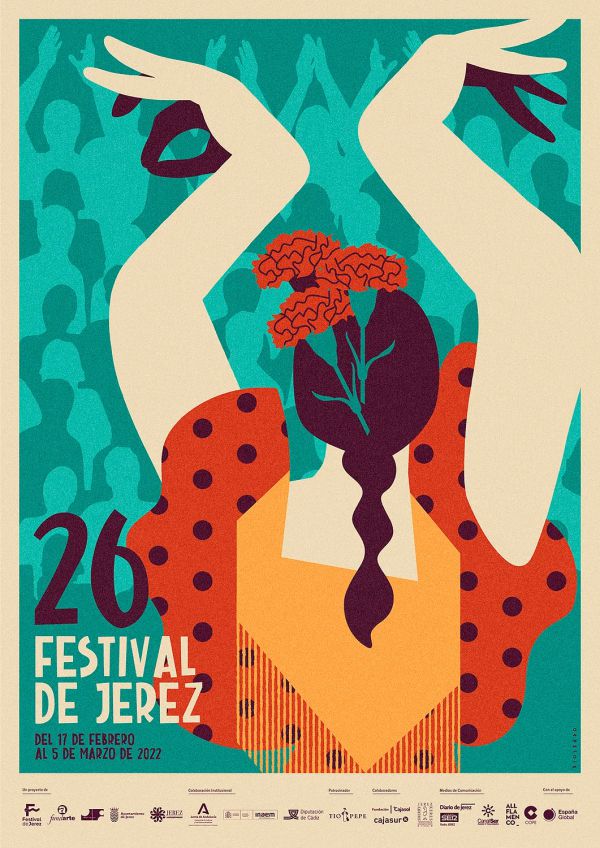
The Festival de Jerez returns with its twenty-sixth edition that will take place between February 17 and March 5. Jerez is preparing to celebrate the return to normality, receiving both national and international audiences. Spectators will be able to enjoy more than forty shows in an edition focused on flamenco and Spanish dance. In the presentation of the Mamen Sánchez festival, he highlighted the recovery of dates, the increase in capacity and the wide variety of courses and workshops scheduled as a turning point towards the "return to normality". As an incentive, the festival will offer absolute and national premieres and presentations in Andalusia. Another point to highlight as a novelty is the expansion of its radius of action to the neighborhoods, in addition, the figure of José Manuel Caballero Bonald will be given prominence. The more than 40 shows on four different stages, Villamarta Theater, Sala Compañía, Bodega González Byass and Museos de la Atalaya; of which more than a dozen will be absolute extremes. The Spanish National Ballet, directed by Rubén Olmo, will open the show with two performances of its "Antonio Ruiz Soler Centenary" at the Jerez Coliseum. Of the four premieres planned at the Villamarta Theater, the first of them corresponds to Manuela Carpio ('The source of inspiration'), where the Jerez-born bailaora has the participation of Antonio Canales, La Farruca and Joaquín Grilo, among other bailaores towards the end of the contest when Antonio Molina 'El Choro' exhibits his '#SiDiosKiere', under the direction of Juan Dolores Caballero. Next, Mercedes de Córdoba, at the head of her company, will present 'Yes, I want!' and Antonio El Pipa will do the same, with his new proposal 'Silver Weddings. XXV Anniversary', with Manuela Carrasco as guest artist. The Sevillian artist will have her own leading role with her show 'Aires de mujeres'. The main stage of the Villamarta Theater will also host the premiere in our country of Mercedes Ruiz's 'Second Skin', as well as the presentations in Andalusia of 'Dancing with Lorca in the Silver Age' by the Carmen Cortés Company; 'Back to one. Excerpt from Trilogy on the guitar' by Rocío Molina; and 'Flamenco: creative space' by Alfonso Losa. García Lorca also inspires the Andalusian Flamenco Ballet which, directed by Úrsula López, will display 'El hex de la butterfly' at the Festival. Other shows will have autobiographical overtones -such as 'More (no) More' by María Moreno- or will move in a complementary duality -such is the case of 'En la cuerda floja' by Ana Morales-. After his acclaimed '¡Viva!', Manuel Liñán enters the tradition from non-conformity in 'Pie de Hierro' and Farruquito who will vindicate the peculiar style that characterizes his family. In Sala Compañía the premieres will be starring Beatriz Morales and Agujetas Chico ('Flamenco sin sulfitos'); Irene Rueda ('Tronie. Portraits of the soul'); and Juan Tomás de la Molía (‘Present’). It so happens that these last two artists were the winners of the Turin de la Frontera 2020 Contest, held in Jerez. Within the Very Personal cycle, the absolute premieres will continue at the Atalaya Museums with Macarena López ('Reverso'); Juan Fernández ('Of the ports'); Sara Jiménez ('Goodbye'); the Compañía Musa Carmen Fernández ('La Rosa Mutábile') and Rosario Toledo, together with Jaiver Galiana and Alba Haro ('Playeras'). A cycle that also includes Lucía Álvarez 'La Piñona' ('April') and the tandem formed by Estévez & Paños, who with 'La confluencia' will close the contest with another of the premieres in the Autonomous Community. Halfway between the Atalaya Museums and the Sala Compañía, the cycle Con Nombre Propio will take place. While Javier Barón will perform in the first of the scenic spaces, Ángel Rojas Dance Project and Rafael Campallo will perform in the second. One of the main attractions of the Toca Toque cycle will be being able to see the guitarist Víctor Monge 'Serranito' on his farewell tour of the stages at Bodega González Byass. This forerunner of concert guitar has titled his show 'Like a dream'. However, this more instrumental programming has other important attractions, since in Sala Compañía Salvador Gutiérrez will unravel his '11 Bordones' and Daniel Casares will tackle 'Guitarrisimo'. In addition, Juan Requena will present his album 'Cenachería' and Joselito Acedo will make a flamenco tour of 'Triana D.F.' |
|||
The myths and superstitions of the theater worldTuesday, December 14, 2021 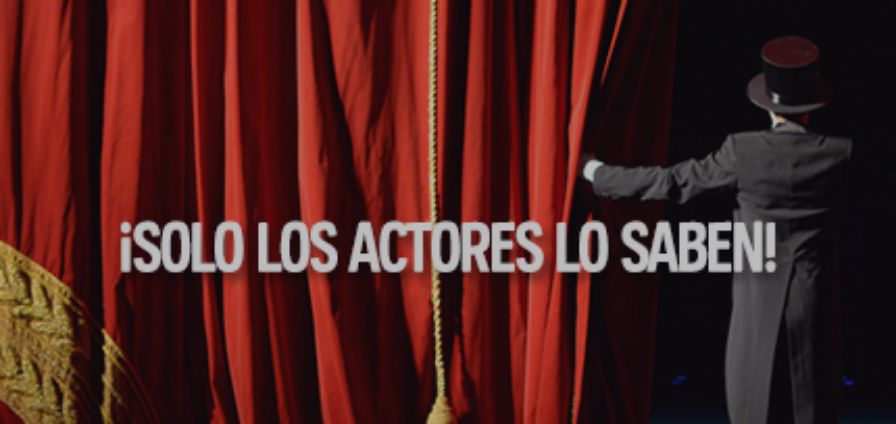
Have we all ever wondered where the expressions that actors use like "a lot of shit" come from? Or superstitions like why no actor wears yellow on stage? Wishing good luck is believed to bring bad luck in performances. That is why other sayings such as "a lot of shit" or "break a leg" in Spanish "break a leg" are used to wish each other luck. "Much shit" is one of the best known and oldest theatrical expressions. It dates back to the days when the usual means of transport was the horse. The more horse droppings at the entrance of the theater, the greater the number of people. So having a lot of shit meant enjoying a packed theater during the performance. The Spanishized "break a leg" (break a leg) does not have its origin so clear. There are various popular theories. One hypothesis is based on the performance of the 18th century actor David Garrick. The actor was so involved in Shakespeare's work of Richard III that he continued to act unaware that his leg was broken. Another hypothesis says that it was born when the actors genuflected at the end to thank the audience for the applause, the more successful the more times they had to say hello. A synonym for catastrophe is that they see you whistling on stage, the reason is that the theater funds are mobile and use ballasts, lead and structures to be exchanged. Those in charge of moving and locating these funds communicate by whistling during rehearsals and the preview, so if it was whistled it could cause a sandbag to fall on your head. The superstition of never wearing yellow is perhaps the most popular internationally. The legend was born as a result of a representation by Molière of "The Imaginary Sick". During this performance he had a severe attack of coughing and convulsions due to his tuberculosis. They had to take him immediately to his house. A few hours later he died. Since then the color yellow and bad luck go hand in hand with him. Therefore it is said that the brave who dares to wear this color will receive reproaches from the press and colleagues. Macbeth and his representation is undoubtedly another of the great myths of the theatrical world. People on the scene avoid saying the word «Macbeth». in the theater, and refer to it as «the Scottish play». In fact, there is even a ritual in case someone pronounces it to clear the curse: leave the theater, spit on the floor, roll over three times and cry out to be able to enter the room again. About the origin, it is not clear either. Some people blame Shakespeare for including authentic spells and curses in the text. Others say that the real witches did not like the treatment received in the play and cursed it. And the most practical use another argument: there is so much violence and weapons in it that it is not difficult for accidents to arise. Mal fario began at the very premiere of the play, in 1606, when the actor who played Lady Macbeth (women were not allowed to act in the Elizabethan theater) suddenly fell ill and died among boxes. Mishaps throughout history have involved actors like Laurence Olivier or Charlton Heston. If you have thought about sending flowers to an actor's dressing room, something they are very grateful for, don't even think about including carnations in the bouquet. This superstition apparently comes from the nineteenth century. Back then, theaters would hire performers seasonally and their way of communicating the renewal of the contract to an actress was to send her roses. If, on the contrary, she sent him carnations, it was the businessman's subtle way of telling him that she was fired from her. Why is there never a completely dark stage in a performance? The reason is the ghosts, there are countless stories and legends about ghosts in this world, the most famous is the one collected in the novel "The Phantom of the Opera" by Gastón Lerroux. That is to say, that to drive away ghosts, a light must always remain on on the stage or between boxes. Actors sometimes spend a lot of downtime in their dressing rooms, waiting to go back on stage or waiting in rehearsals; and they have to entertain themselves with something. But they are forbidden to knit something with wool, that means bad luck for the entire cast of the work. Peacock feathers are frowned upon not only in the theater. The colorful drawings of these birds, which may be reminiscent of a devilish eye, seem to be to blame for this: they signify the evil eye. According to tradition, many unpleasant events and accidents have occurred on the scene with one common denominator: there was a peacock feather in it. The breaking of a mirror is equivalent, according to popular wisdom, to seven years of bad luck, and not only in the world of the scene, where they are synonymous with bad luck even whole. Anyway, superstitions aside, real mirrors are dangerous elements on stage, because they present technical problems with the lights, and can be a cause of distraction for some actor or actress who is not very concentrated and with an ego swelling. Some actors, during the rehearsal period, slept with the script under their pillow. It is not that they fell in love with the text or with its character, but rather that there was a belief that that way it would be easier for them to learn the role; on the contrary, others consider it a sign of bad luck. In any case, it is always safer to try to learn it through study and repetition. Do you know any other superstition or curiosity from the world of theater? |
|||
The complete talk on the aid of European Funds regarding Performing Arts and Music is now available on videoWednesday, November 17, 2021 We share with all of you the webinar held on November 11 with Jaime Guerra and Fernando Cerón, from INAEM On November 11, we held a webinar, organized by the Spanish Network of Theaters and FAETEDA, on "Public aid for the modernization of artistic management structures in the field of performing arts and music, framed in the Recovery Plan , Transformation and Resilience of the European Union. ”From today, the video of this talk is available on our YouTube channel. The session was given by Jaime Guerra (Director of the INAEM Coordination Department) and Fernando Cerón (Deputy Director General of Theater and Circus of the INAEM) and was presented by Carlos Morán (President of the Spanish Network of Theaters, Auditoriums, Circuits and Festivals of public ownership) and Jesús Cimarro (president of FAETEDA). In this informative talk, the key lines of aid from European Funds for the Performing Arts and Music sector were presented and detailed information was provided on the types of calls for aid, deadlines for submission, requirements and purpose. |
|||
MAE Performing arts exhibition of Extremadura 2021Wednesday, November 17, 2021 
MAE is an exhibition of performing arts that is held annually in the town of Cáceres in the month of November. It was born in 2016, its purpose being the promotion of professional theater of national and international origin, paying special attention to companies from Extremadura and Portugal. During the next 23, 24 and 25 November 2021 the sixth edition of "Extremadura Scene. Iberian Show of Performing Arts". "Extremadura Scene" is a professional meeting where national and international programmers, cultural agents, networks, companies, companies and, of course, the public that will be able to attend the performances that will take place at the Gran Teatro de Cáceres and other spaces will meet. alternative and theatrical in the city. To contribute to the revitalization of the sector there will also be spaces for debate and reflection in order to facilitate commercial activity between companies and programmers. Extremadura Scene. Iberian Show of Performing Arts is organized by the Center for Performing Arts and Music (CEMART), the Department of Culture, Tourism and Sports of the Junta de Extremadura, and the Association of Cultural Managers and Managers of Extremadura (AGCEX). Since 2020, the MAE has been part of COFAE, the coordinator of performing arts fairs in the Spanish state. It is a non-profit cultural association that was born in 2006 and brings together the main performing arts fairs in the State. Currently, 19 fairs make up the association. COFAE's mission is to coordinate, collaborate and disseminate the concept of the performing market in the field of performing arts, both state and international. OBJECTIVES
|
|||
| -- Go to older news -- | |||
|
© Industrias Maquiescenic S.L.
Ctra. Alcázar de San Juan, Km 0,6
Phone:(+34) 926 513 045
E-mail:
|

|